Are you considering building a greenhouse? If so, there are pertinent aspects you cannot afford to get wrong such as the grow light positioning, spectrum of light, and crop lifecycle. Besides, you also need to have the ideal light quality. These requirements take us to today’s topic. We will discuss types of light features relevant to growing crops in a growing area and everything related to PPF lighting. Take a look.
What Exactly Does PAR (Photosynthetic Active Radiation) Mean?
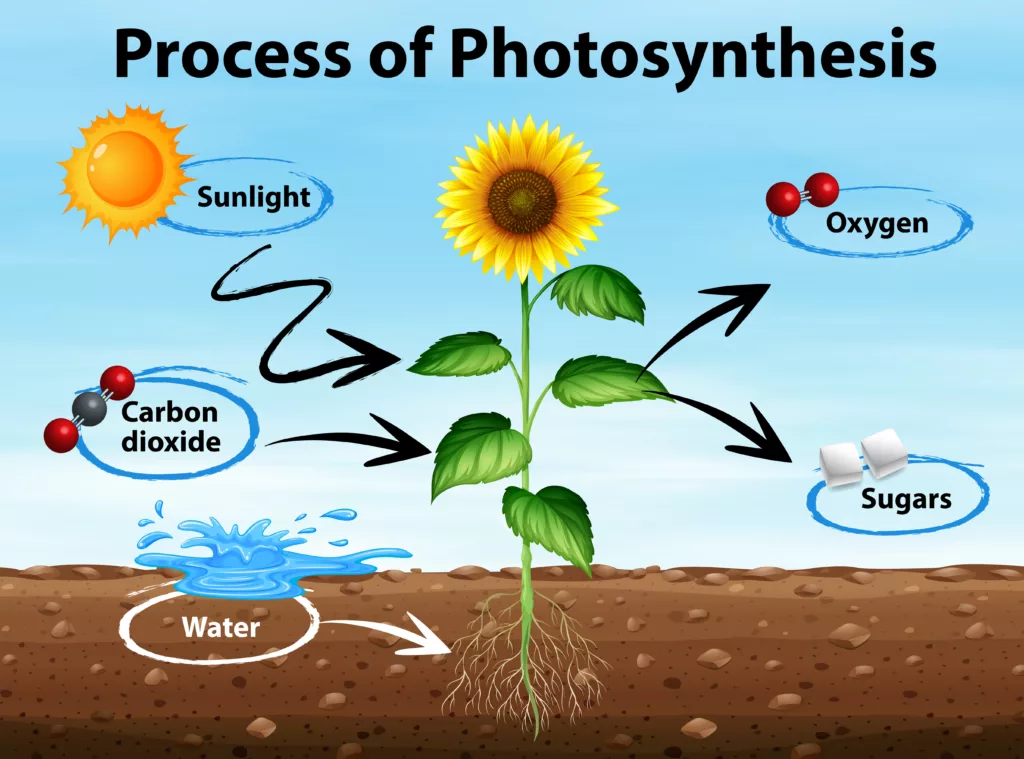
Photosynthesis Process in Plants
PAR describes the kind of light within the light spectrum that encourages photosynthesis in plants. Photosynthesis is a critical process in the growth of plants as it ensures the conversion of light energy into chemical energy used as food.
Notably, we represent the photosynthesis-related waveband in the light spectrum by PAR rather than a typical light measurement. Also, the PAR wavelength sits within the 400nm-700nm visible range of natural light.
To fully realize optimal lighting layout and usage, we must consider PAR. Hence, when buying grow lights, you must fully comprehend how much PAR they produce.
Also, you must know how much photosynthetically active radiation is available for the plants and how much energy they use to create their PAR.
What Is PPF (Photosynthetic Photon Flux) in Grow Lights?
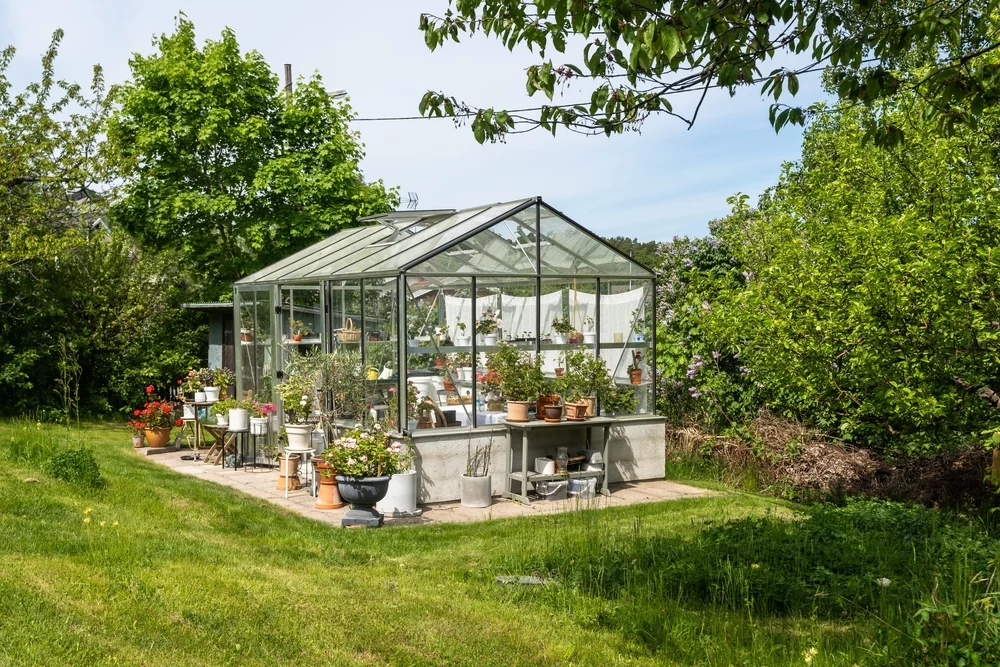
A Greenhouse under natural light
We use PPF in describing PAR in more detail. Primarily, PPF will give the PAR of a LED fixture or lighting system over a definite time. Its unit of measurement is μmol/second and is arguably the second crucial component to creating the ideal lighting for your growing space.
Note the PPF of a cultivated light is a critical parameter. It allows you to evaluate the lamps you need the per area to provide the plants with the necessary light level.
However, the PPF by itself is not too helpful. Primarily, it does not disclose the light content that the plants receive or any other surface. So, be aware that not all lamps of the same PPF will be as efficient at channeling that light toward the crops.
As a grower, you need the insight above when measuring PPF. You can consult the help of the various PPF evaluation tools on the market. Alternatively, find a pro to develop a lighting system that is effective and sufficient to provide the PAR and PPF you require.
Photosynthetic Photon Flux Density (PPFD)
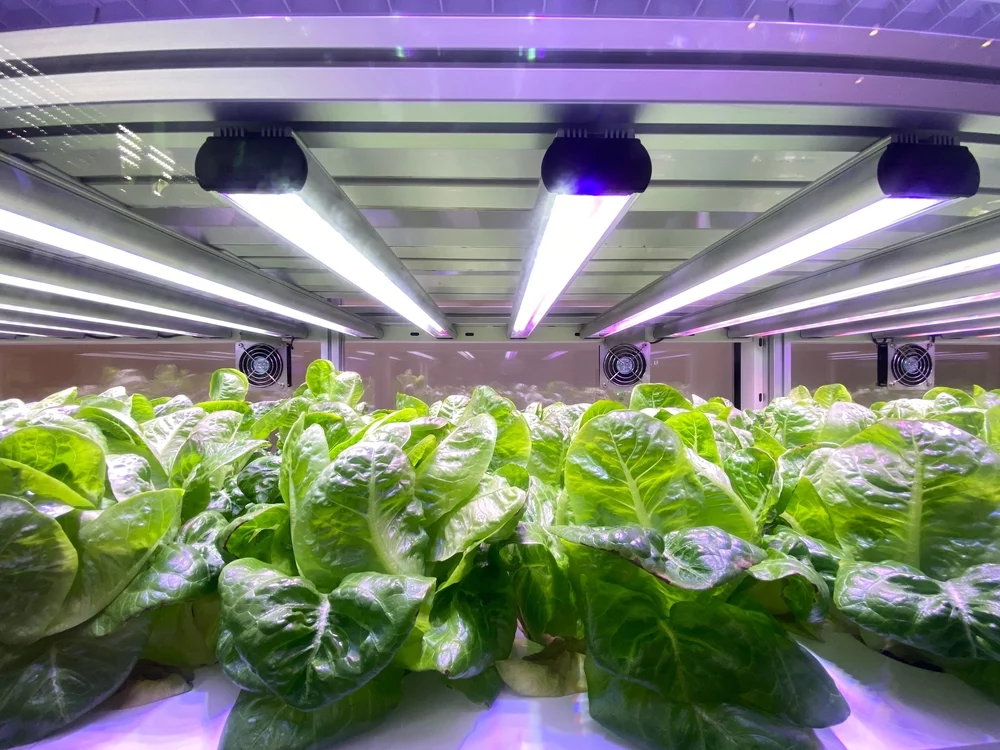
Artificial lights in a greenhouse
Thirdly, we have PPFD, which is also critical in determining PAR. We describe the light content reaching the crop’s canopy ( Par zone) in terms of the photosynthetic photon flux density (PPFD). In addition to measuring PPF, it also calculates surface area; thus, its unit of measurement is µMol per square meter per S.
Also, PPFD is the amount of those vital, photosynthetic photons that affect the growing space and how efficiently those lights produce light.
So do you need to compare grow lights on the market right now? It would help if you used the PPFD since it is currently the best metric. Today, light manufacturers specify the PPF. Also, you’ll find the light output of grow lights in the PAR zone at the lamp level specification.
Also, we can simulate the PPFD along with the lamp’s light output and actual positioning.
Yield Photon Flux (YPF)
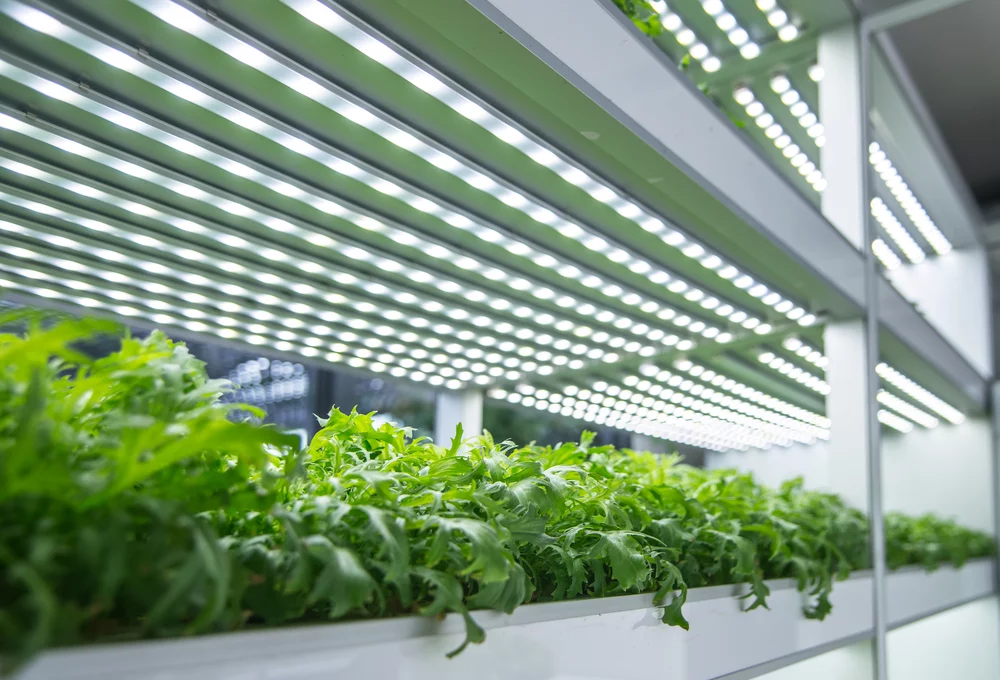
LED lighting in a Greenhouse
The YPF represents the light intensity metric which determines how ideal a particular light wavelength is for the plants whenever they only receive a specific light color.
PAR lighting only considers photons in the visible light spectrum(400-700 nm) and weighs each photon equally.
However, YPF takes into account photons between 360 and 760 nm. Besides, it weighs each photon following the plant’s photosynthetic response to that specific wavelength of light.
When we know the grow light’s precise spectrum, we can alter the Photosynthetic Photon Flux (PPF) values in mol/s. This is by providing various wavelengths and colors with different weighting factors.
Consequently, the modification will generate a Yield Photon Flux (YPF) measurement.
Daily Light Integral (DLI)

A greenhouse under grow lights
The daily photosynthesis-active radiation (PAR) as a factor of light intensity and duration will give us daily light integral (DLI). Its SI unit is mol/d.m².
Your plants’ daily light impacts their development, growth, crop quality, and yield. Therefore, it is crucial to monitor the DLI metric regularly.
The DLI is a valuable tool for adding additional lighting to greenhouse projects as part of the lighting strategy. You can determine the ideal daily total amount of light that most crops can use. The sum of all visible light for a given day includes both natural and artificial light.
Photosynthetic Photon Efficacy (PPE)
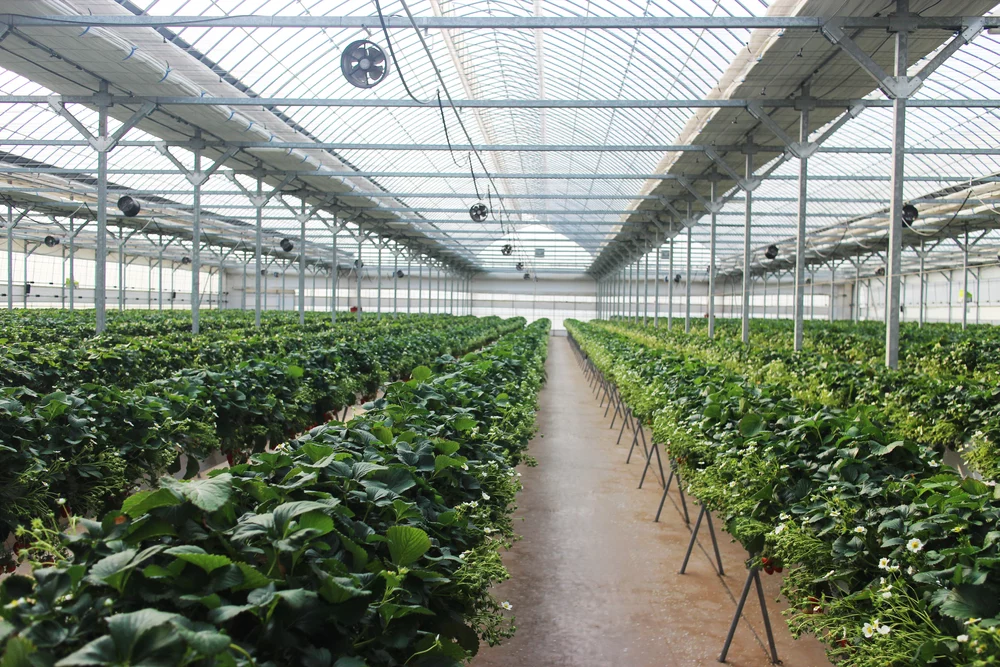
Strawberries in a well-lit greenhouse
PPE provides how effectively a light source converts electrical energy into PAR light. Its SI unit is in moles per joule (mol J-1) of power. PPE is a crucial metric for assessing various manufacturers’ fixtures’ efficacy.
Mathematically, we refer to ratios within different units as efficacy.
Regarding horticultural lighting, we measure efficiency in micromoles of photon output per second, per watt of input power. Given that LED lights are becoming more effective and have higher PPE values, it is essential to understand how they will impact crop quality and yield.
Grow Lights and the Coefficient of Utilization
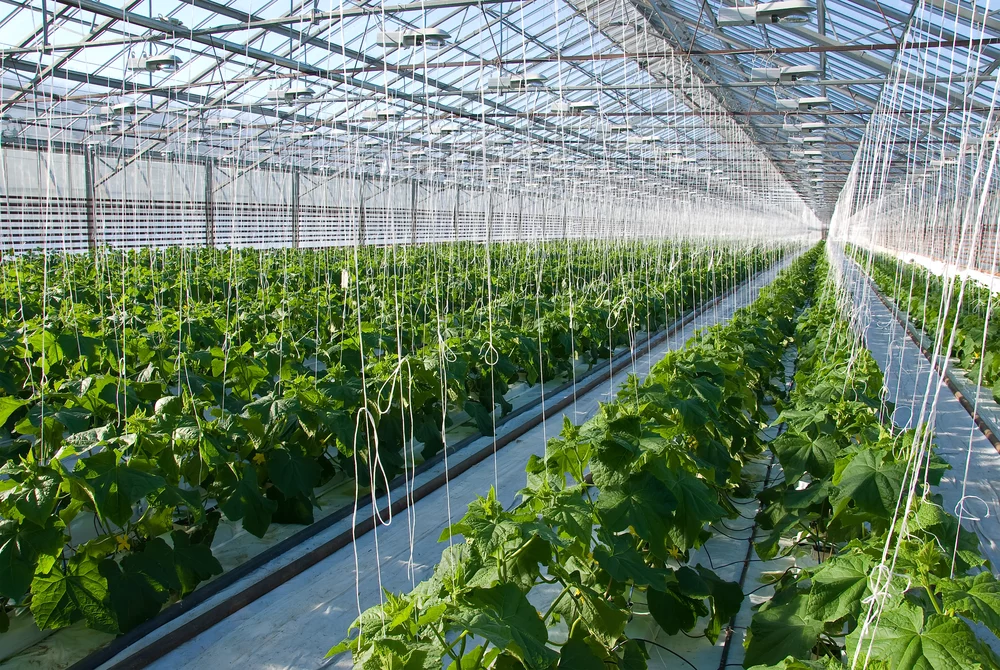
Growing cucumbers in a greenhouse
Understanding a grow light’s “efficacy” will help us determine how effectively it promotes plant growth. Also, it aids us in knowing how the plant converts the Watts we are putting into plant-available light that emerges. A grow light receives Watts, but PPF is what appears.
Therefore PPF/W is a simple formula to calculate a grow light’s effectiveness. The PPF/W of indoor grow lights varies greatly. There are many causes for this, with cost ranking as the main one.
Note that the amount of PPF produced by the light that reaches the plant is measured by the coefficient of utilization (CU). We obtain it by measuring the amount of light on a space of a specific size from a fixture.
Importance of Distance for Grow Lights and Indoor Plants
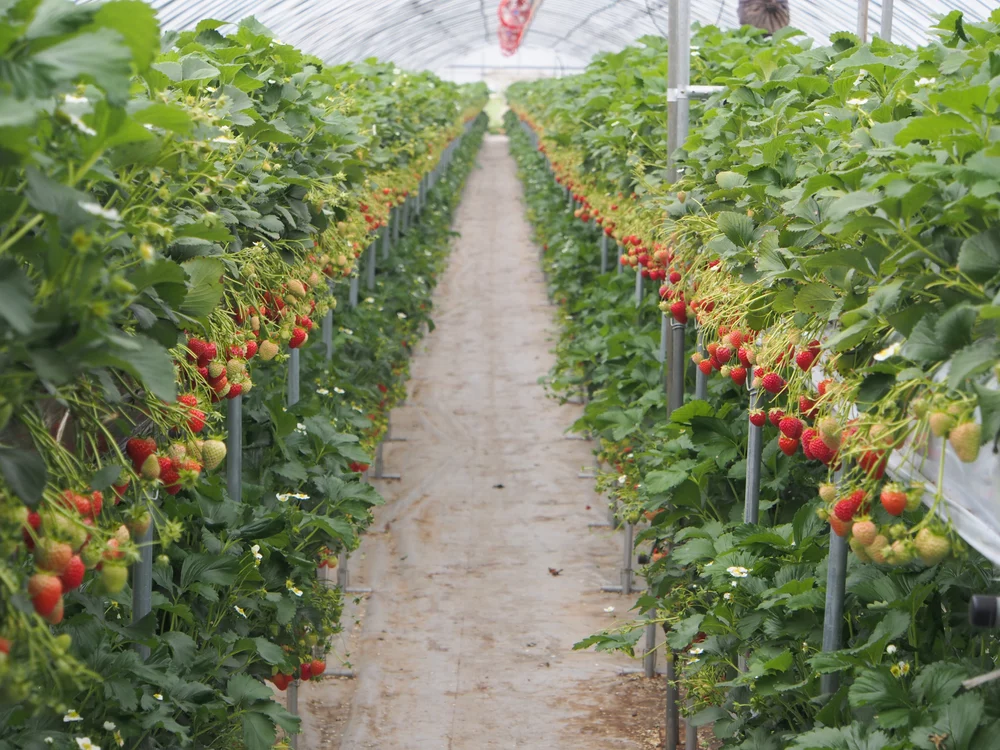
Strawberries in a Greenhouse
It is relevant to maintain a sufficient distance between plants. Also, a light source is crucial when using bulbs that generate a lot of heat, like high-pressure sodium and incandescent.
But, even with LED lighting, preserving a suitable distance aid in ensuring healthy plant development. Depending on the type of plant, growing technique, and grow light, the optimal distance between grow lights and plants changes.
Nevertheless, the rule of thumb is to place the grow light at a distance greater than 12 inches from the plants, depending on the light’s wattage. Besides, to avoid burning the plants, you might need to place a high-wattage grow light farther away.
On the other hand, you could position a grow light with a lower wattage closer to the plants.
Summary
Notably, the parameters, metrics, and concepts described in this guide are essential tools to watch out for when comparing horticultural light fixtures. It’s, therefore, crucial to consider all of them as you venture into this field. We hope this blog has been of great help and will help you find your edge in matters to do with lighting for your growing space.
